When disaster strikes, grocery stores won’t stay stocked forever. If you’re serious about long-term survival, you need a steady supply of protein. And that means raising your own meat. But not all animals are created equal. Some take too much effort, others eat you out of house and home, and a few are just plain inefficient.
So, which ones are actually worth the trouble? And more importantly—which breeds will give you the most bang for your buck?
Chickens: The Survivalist’s MVP
You can’t go wrong with chickens. They’re like the Swiss Army knife of livestock—compact, versatile, and low-maintenance. A small flock can provide eggs daily, and when the time comes, they’re an easy source of meat. Plus, they’ll eat just about anything: table scraps, bugs, even weeds.
Best Meat Breeds:
- Cornish Cross – The fastest-growing meat bird, ready in just 6-8 weeks. Expect 6-8 lbs of meat per bird. Downside? They’re not great foragers and can have health issues if overfed.
- Freedom Ranger – Slower growing (10-12 weeks) but more active and better at foraging. Dresses out around 4-6 lbs.
- Rhode Island Red – Dual-purpose (eggs + meat). Not as meaty as dedicated broilers, but hens dress around 4-5 lbs, and they’re hardy as hell.
Meat Output:
- Broilers (Cornish Cross): 6-8 lbs per bird in 2 months.
- Heritage Breeds: 4-6 lbs, but take 4-5 months.
But here’s the kicker—they reproduce fast. A good rooster and a few hens can keep you in both eggs and meat indefinitely. And if you’re worried about noise (because, let’s face it, roosters don’t care about OPSEC), stick with hens. They’ll still lay eggs; they just won’t hatch without a male around.
Rabbits: The Silent Protein Machines
If you need meat fast and quietly, rabbits are hard to beat. They breed like… well, rabbits. A single doe can produce dozens of offspring a year, and they reach butchering size in just 8-12 weeks. Unlike chickens, they’re nearly silent, making them ideal if you’re trying to stay under the radar.
Best Meat Breeds:
- New Zealand White – The gold standard for meat rabbits. Fast growth, good feed conversion, and dress out at 4-5 lbs.
- Californian – Similar to New Zealands but with better cold tolerance.
- Silver Fox – A heritage breed that’s slower-growing but more self-sufficient.
Meat Output:
- Per rabbit: 2.5-5 lbs (depending on breed and age).
- One breeding pair can produce 200+ lbs of meat per year if managed well.
The downside? Rabbit meat is lean—almost too lean. If you’re relying on it as a primary protein source, you’ll need fat from somewhere else to avoid “rabbit starvation” (yes, that’s a real thing). But pair them with a few chickens or ducks, and you’ve got a balanced survival diet.
Goats: The Ultimate Survival Livestock
Goats don’t get enough credit. They’re tough, adaptable, and can thrive on land where other livestock would starve. Need milk? Goats produce it. Need meat? A well-raised goat can dress out at 40-60 lbs of usable meat. Need a brush-clearing service? Goats will mow down weeds, shrubs, and even small trees.
Best Meat Breeds:
- Boer – The #1 meat goat. Fast growth, high muscle yield, and excellent feed efficiency. Bucks can dress out at 60-80 lbs.
- Kiko – Hardy, low-maintenance, and great foragers. Slightly less meat than Boers but tougher in rough conditions.
- Spanish – Old-school survival goats. Leaner meat but incredibly disease-resistant.
Meat Output:
- Buck (male): 50-80 lbs.
- Doe (female): 40-60 lbs.
The catch? They’re escape artists. If there’s a weak spot in your fence, they’ll find it. And they’re social—you can’t just keep one unless you want a miserable, noisy animal. But if you’ve got the space and patience, goats are one of the best long-term investments for a survival homestead.
Pigs: The Ultimate Meat Factories
If you want maximum meat with minimal effort (relatively speaking), pigs are the way to go. They convert feed to muscle faster than just about any other animal. In six months, a piglet can go from 10 lbs to 250+ lbs of pork. And unlike cows, they don’t need acres of pasture—just a sturdy pen and plenty of food.
Best Meat Breeds:
- American Yorkshire – Lean, fast-growing, and efficient. Dress out at 70-75% of live weight.
- Berkshire – More marbled, flavorful meat. Slower growth but better taste.
- Hampshire – Good feed-to-meat ratio and hardy.
Meat Output:
- 250-lb pig → 150-180 lbs of meat (including lard, organs, etc.).
- One sow can produce 20+ piglets per year—that’s thousands of pounds of pork if managed right.
But pigs aren’t for everyone. They’re smart, which means they’ll test fences, root up your land, and generally cause chaos if not managed right. And they eat—a lot. If you don’t have a steady supply of scraps or forage, they’ll drain your resources fast. Still, for sheer meat output, few animals compare.
The Hidden Challenges of Raising Meat Animals
Raising livestock for meat sounds straightforward—until you actually do it. Every animal comes with its own set of headaches, from surprise vet bills to escape-artist antics. If you’re not prepared, what should be a reliable food source can turn into a costly disaster.
Here’s the raw truth about the problems you’ll face with each animal—and how to handle them before they ruin your survival plans.
Chickens: Disease, Predators, and the Great Egg Drought
Chickens seem like the perfect starter livestock—until your entire flock gets wiped out overnight. The biggest threats? Disease, predators, and sudden egg shortages.
Disease Outbreaks
Chickens are walking petri dishes. One sick bird can spread avian flu, coccidiosis, or Marek’s disease through your flock in days. Symptoms like lethargy, diarrhea, or sudden death mean you’ve got a crisis on your hands. Quarantine new birds for at least 30 days and keep your coop clean to avoid disasters.
Predators (Including Your Own Dog)
Raccoons, foxes, hawks, and even neighborhood dogs see chickens as an all-you-can-eat buffet. A poorly secured coop is a death sentence. Use hardware cloth (not chicken wire), bury fencing 12″ deep, and lock them up at dusk.
The Egg-Laying Strike
Hens slow down or stop laying due to stress, molting, or poor nutrition. No eggs in winter? They need 14+ hours of daylight—add a coop light if necessary. Low protein? Supplement with mealworms or black soldier fly larvae.
Feed Costs (The Silent Budget Killer)
Chickens eat constantly. If you’re relying on store-bought feed, prices can skyrocket. Grow fodder (sprouted grains), let them free-range, or breed soldier flies to cut costs.
Rabbits: The Breeding Bottlenecks and the Lean Meat Trap
Rabbits are efficient—until they stop breeding, die mysteriously, or leave you protein-starved.
Breeding Failures
Does sometimes refuse to mate, eat their young, or produce small litters. Stress, poor diet, or inbreeding are usually to blame. Keep bucks and does separate until breeding time, and never let siblings mate—it weakens the gene pool fast.
Heat Strokes and Frozen Kits
Rabbits die instantly in extreme temps. Over 85°F? They’ll drop dead without shade and airflow. Below freezing? Newborn kits freeze if the nest box isn’t lined with fur and straw. Insulate hutches in winter, provide frozen water bottles in summer.
The Rabbit Starvation Problem
Rabbit meat is too lean for long-term survival. Eating only rabbit can cause protein poisoning (fat deficiency). You must supplement with fats—lard, dairy, or fatty meats like pork.
Waste Management (The Urine Problem)
Rabbit urine reeks and attracts flies. Use deep litter bedding (hay + wood shavings) and compost the waste to avoid a fly-blown disaster.
Goats: Escape Artists and the Parasite Nightmare
Goats seem tough—until they’re dying from worms or jumping your fence.
Parasites (The Silent Killers)
Barber pole worms drain goats of blood, causing anemia and death. Symptoms: pale eyelids, diarrhea, weight loss. Rotate pastures, use FAMACHA scoring, and keep copper boluses on hand.
Fence Testing 101
Goats will escape. They climb, headbutt weak spots, and squeeze through gaps. Use cattle panels (not barbed wire) and electric fencing if you want them to stay put.
Feed Problems (They’re Pickier Than You Think)
Goats can’t live on grass alone—they need browse (brush, leaves, weeds). No variety? They’ll get malnourished fast. Plant blackberry bushes, willow, and mulberry for free forage.
Birthing Disasters (Breech Kidding & Milk Fever)
Dystocia (difficult birth) kills both kids and does. Learn how to assist a breech delivery. After birth, milk fever (low calcium) can strike—have calcium supplements ready.
Pigs: The Feed Cost and the Great Escape
Pigs grow fast—but they’ll bankrupt you in feed or destroy your land if mismanaged.
Feed Costs (They Eat Like Teenagers)
A 250-lb pig consumes 600-800 lbs of feed. If you’re buying commercial pellets, you’ll go broke. Supplement with kitchen scraps, acorns, and fermented grains to cut costs.
Land Destruction (They’re Natural Bulldozers)
Pigs root. They’ll turn a grassy pen into a mud pit in weeks. Use rotational grazing or put them in wooded areas where their digging is useful.
Aggression (A Bored Pig is a Dangerous Pig)
Hungry or confined pigs bite, ram, or even cannibalize. Give them space, enrichment (like logs to chew), and enough food to prevent fights.
Heat Stress (They Can’t Sweat)
Pigs overheat easily. No wallow or shade? They’ll die in summer. Always provide a mud pit and plenty of water.
Finding the Right Livestock for Your Survival Needs
The key to successful meat production in a survival scenario isn’t about choosing the “best” animal—it’s about finding what works for your specific situation. Your land, climate, available time, and personal skills all play crucial roles in determining whether your livestock will become a reliable food source or just another problem to manage.
Start by considering your environment. If you’re working with limited urban or suburban space, rabbits and chickens make the most sense—they’re compact, relatively quiet, and can be raised discreetly. But if you’ve got a few acres to spare, goats, sheep, or even pigs become viable options, provided you can manage their grazing or rooting habits. Climate matters just as much as space; goats thrive in hot, dry conditions, while cold-hardy chicken breeds or well-insulated rabbit hutches are better suited for harsh winters.
Next, think long-term about food. When supply chains collapse, store-bought feed disappears fast. Chickens need grain, goats require browse, and pigs consume massive amounts of scraps—so if you can’t produce at least half their diet yourself, you’re setting up for failure. Animals that forage well, like free-range chickens or brush-clearing goats, give you more resilience when resources run thin.
Your available time and labor are just as important. Rabbits are one of the easiest options—once their breeding system is in place, they need only basic care. Sheep mostly mind their own business if they have good pasture. But pigs? They’ll test fences, root up your land, and demand constant feeding. And dairy goats lock you into a twice-a-day milking schedule with no breaks. If you’re prepping solo or have limited time, stick with low-maintenance animals first.
When it comes to meat production, speed and yield vary dramatically. Rabbits give you quick, small batches of lean protein, while pigs deliver huge quantities of meat—but only if you can handle their appetites and destructive tendencies. In a true collapse scenario, some animals are simply more practical than others. Quiet, fast-breeding rabbits or disease-resistant heritage chickens will serve you better than noisy pigs or high-maintenance sheep when stealth and self-sufficiency matter most.
The smart approach? Start small. Master one species—whether it’s chickens for eggs and meat or rabbits for rapid reproduction—before expanding. That hands-on experience is worth more than any theory when real survival becomes necessary. Because when systems fail, the people who’ve already worked out their food supply won’t just survive—they’ll thrive. So ask yourself: which animal fits your land, your skills, and your long-term needs? The answer is your first step toward true food security.




















































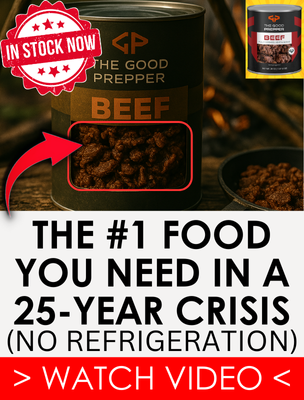
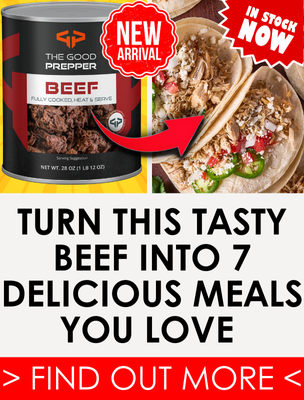






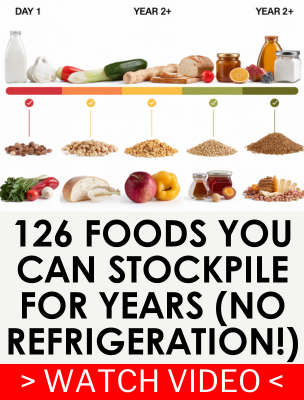
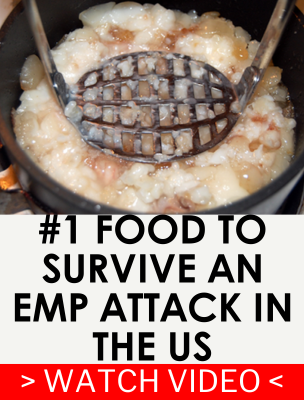
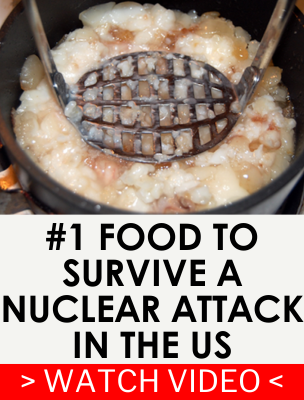












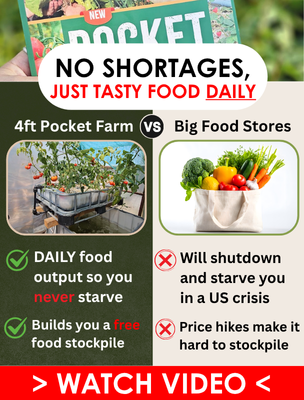

I’ve read that Adult Gerbils provide about one pound of meat. People keep them as pets in the home and in cages except when played with.. When they poop, it is hard, dried. kernels Urine is collected with newspaper. in the cages. They may be easiest to keep. I have read that sailors, hundreds of years ago, often brought gerbils aboard ships to provide a source of fresh meat..
IF, I limited myself to inland (among a few contingency choices) as opposed to sea based mobility by sailboat (yet another of many choices), I might facilite a productive fish population and have studied how to do that well.
My fish will be quiet unlike roosters not understanding operational security and they will be stealthy as they hide underwater unlike animals roaming. They won’t need fencing or barns to prevent escape like goats or pigs or sheltering them from weather extremes or predators and create similarities to a big billboard screaming to angry mobs or bandits that their target of acquisition is here almost as if it had a neon flashing arrow!
If it’s too hot or too cold, my fish will be just fine as they find their desired temperature at the correct in the water column.
An occasional traveler likely won’t see signs that an abundance of healthy protein was just passed by. All this fits with my dwelling also being unseen. Being invisible doesn’t make my facilities an anchor to me by restricting my travels to be there continuously to protect it. Being unseen is passive protection with multiple advantages!
But, IF I’m enjoying sea based mobility by sailboat, then there will be plenty of fish wherever I go, so I have the best of equipmentand my skillshave beenwell developedover decades.
I do enjoy seafood. Crab traps that fold up take up little space and are inexpensive and are very productive. Many inland areas can do similarly with crawfish. No aspect of any of this attracts predatory hungry mobs intent upon victimizing their Prepper prey, so it’s an excellent feature that fish naturally abide to my operational security priorities.
Fish are a healthy protein. They provide plenty of the healthful and essential Omega-3s an essential fatty acid, best fresh and it stores poorly. In supplement form as capsules, they are in my freezer with fresh fish being my plan for the harsh times to come. Essential in nutrition context means the body can’t make it, can only get it in the diet and needs it to make cellular membranes, tissues, messaging and much more in bodily functions, so it’s not to be omitted because without your good health, all of the rest of your preparedness becomes a moot point.
How important is fish in our diets to preparedness? The term “survival” might not apply well because barely surviving one thing means vulnerabilities to everything else.
I haven’t had a cold nor flu for thirty-seven years! Likely due to a blessing of genetic advantages, but even with that, without good nutrition those advantages would quickly disappear which will especially be the case for the unprepared masses which means a cascade of deaths from diseases as they spread among a weakened population under stress which amplifies disease vulnerabilities to them and by extension, spreading diseases to you!
You need to go well beyond “survive” to thrive! You most likely need to thrive to survive. “Survive” in terms of these good times is often in context with “Emergency preparedness” which is not preparedness for change (real preparedness, true preparedness, my preparedness) as it is often associated with phrases like: “until rescued” (being in “critical condition” is technically still surviving and requires rescue and a functioning hospital) or “until things return to normal” (much of what is called “emergency preparedness” is designs to not be inconvenienced by something momentary or temporary.
I’m not saying emergencies don’t happen. Since they do happen as local events widelyreportedin the news, it’s our strongest rationale to promote preparedness to our skeptical friends. But, the news won’t tell us the unknown future changes.
But, don’t let yourself get caught up in emergency preparedness, as it’s often taking an opposite direction, and don’t become stagnant in that. Instead, focus on preparedness for change as I elaborated upon in a recent previous article.
[email protected]
You may want to add Coturnix Quail, smaller than chickens and more quiet.
This is one of the better articles I have seen. It presents both pros and cons in realistic terms. I am going to save this one, maybe print it out and stick it in a notebook for later reference and sharing.